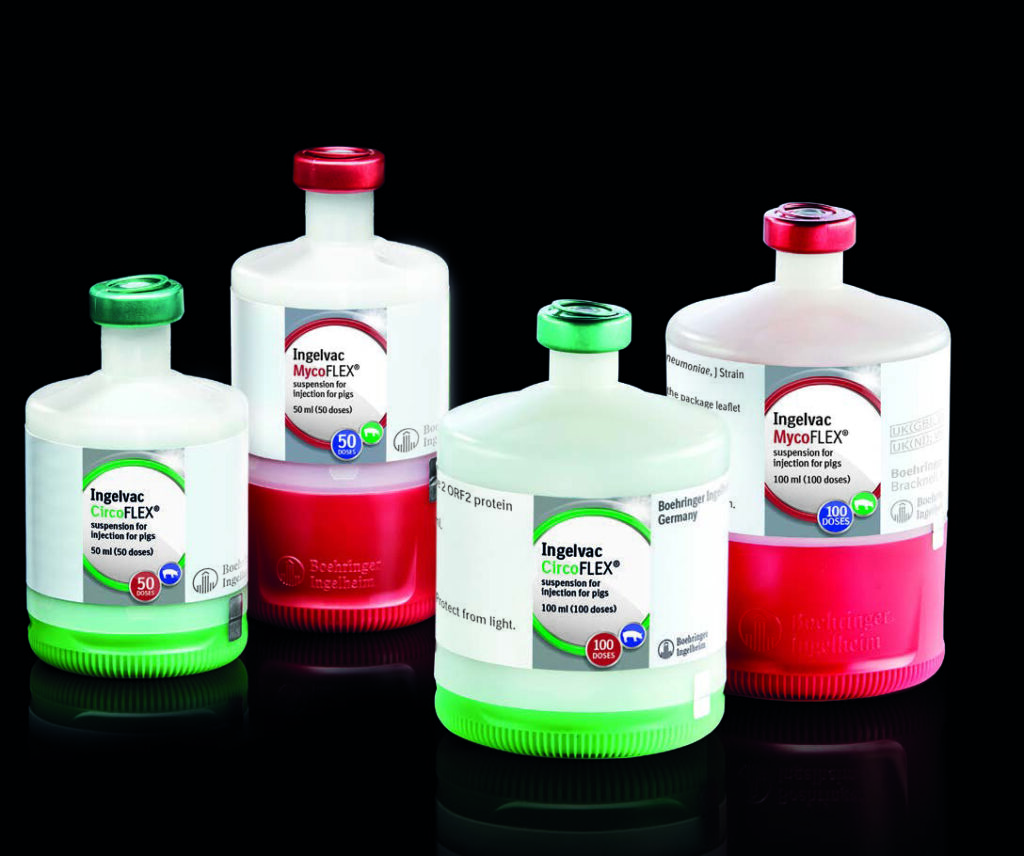Boehringer Ingelheim has released a patented bottle system that enables the mixing of two fresh vaccines, Ingelvac CircoFLEX and Ingelvac MycoFLEX, at the point of use without the need for needle transfer.
Boehringer said TwistPak for FLEXcombo enables pig producers to combine the two vaccines in a convenient, hygienic, and safe way, compared with mixing via transfer spikes.
It has demonstrated that vaccinating pigs with its FLEXcombo vaccine, which controls Porcine Circovirus Type 2 (PCV2) and Mycoplasma hyopneumoniae (Mhp) improves pig performance and also reduces the overall carbon footprint of pig production.
“Fast and even growth is vital for profitable pig production, and effectively mitigating disease through vaccination, as part of a disease control plan, supports pigs to meet their growth targets on time,” said Dr Lysan Eppink, Boehringer Ingelheim’s swine veterinary adviser.
“Any increase in time to marketable weight caused by disease not only increases production costs, but also increases the environmental impact of that pig through additional feed, water, power, veterinary medicines and other resources.”
In Boehringer’s lifecycle assessment (LCA) for FLEXcombo, environmental savings were calculated using average daily gain (ADG), feed conversion ratio (FCR) and mortality rates from 17 studies (2008-2020). Greater environmental savings were found in higher performing vaccinated pigs versus non-vaccinated pigs.
Vaccinated pigs not only had improved performance indicators, and more efficient growth, but also reduced GHGe by 5% (1647kg) and water use by 2% (42.83L).
The specific vaccine used can have an impact, Dr Eppink added.
In the small pigs at weaning, this effect on growth was even more obvious with the small pigs vaccinated with the product at weaning clearly outperforming the other pigs at 13 weeks on average daily gain and uniformity.
The lifecycle assessment considers the environmental cost of producing the packaged vaccines, too. Here, Boehringer Ingelheim has lowered its carbon emissions and water-use footprint by utilising 80% renewable energy, water recycling systems, and sustainable building management at its production facilities, and greening its logistics in packaging and distribution.




